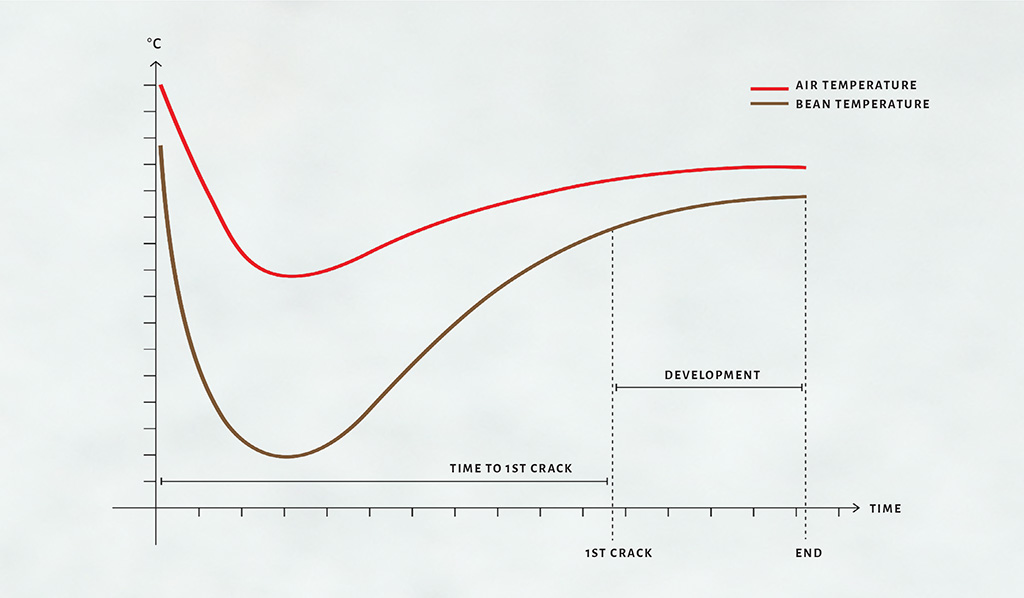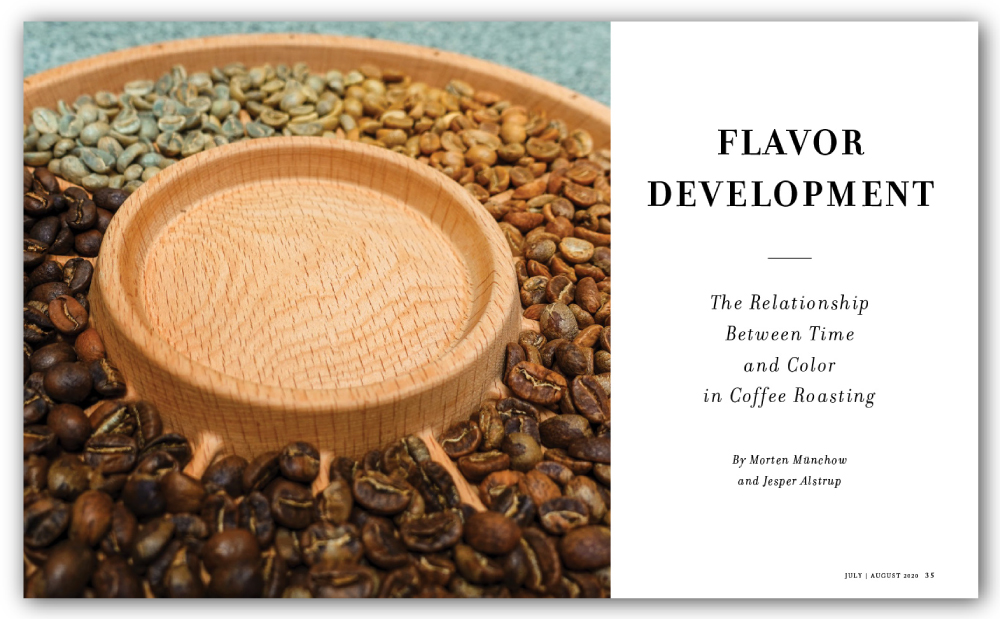(Editor’s note: The following comes from an article by Morten Münchow and Jesper Alstrup of CoffeeMind, which appeared in the July/August 2020 issue of Roast Magazine. Click here to read the full article.)
Worldwide, consumer demand for high-quality coffee is surging. While total coffee consumption grows each year, the specialty coffee segment has undergone the largest share of growth. This increased demand is coupled with greater consumer awareness that the sensory experience of drinking coffee is a culmination of the many links and processes along the value chain. From plant genetics, terroir and processing methods to transportation, storage, roasting and brewing, as well as the social environment in which coffee is consumed, quality can be regarded as the overall sensory enjoyment of all these aspects combined.
In this article, we will focus on one of the main transformative processes in the value chain that impacts coffee quality: roasting. The magnitude of importance that some of the key roast control parameters have on the sensory properties of our resulting brew are critical to product differentiation in the global marketplace.
However, a systematic approach to roast modulation can fully guide us only if we support these experiments with an evidence-based approach to sensory evaluation. For this reason, we have decided to share our findings from an extensive, newly published research study we conducted with the help of the wider coffee community. The study focuses on the end color of a coffee after roasting to ensure consistency and quality when creating roast profiles.
Broadly speaking, the difference in roasting styles between commercial and specialty coffee offers a fascinating glimpse into how the roasting community is still a long way from reaching consensus on the significance of certain roasting control parameters and which factors have the biggest impact on flavor. Of course, how these parameters are configured for each roaster reflects that machine’s roast style — but knowing which variables to measure will allow for greater clarity in future research and education programs.
For example, much research has been done on the physical and chemical impacts of roast speed from high temperature short time (HTST) and low temperature long time (LTLT) experiments in the commercial coffee industry. On the other hand, specialty coffee roasters have put emphasis on the timing of the roast phases and an event during the roasting process known as “first crack.” First crack occurs when the accumulated pressure inside the bean causes it to expel steam, along with other volatile aromatic compounds, making an audible “crack” in the roasting machine. This step heralds the onset of a phase that we refer to as “development time.” This final phase can be considered as a measure of time that the coffee spends in the primary aroma-formation phase.
Consensus on Time and Temperature
The most widely accepted reference point in the worldwide roasting community seems to be the crucial relationship between time and temperature. This is, without doubt, a fundamental starting point for understanding the roast process. But it is also a point of departure from any common consensus when it comes to agreed control parameters regarding quality and consistency. Although roast color is still considered an important parameter in specialty coffee, there seem to be many conflicting opinions about the magnitude of its relevance as a diagnostic tool for quality control. In this context, generic labels such as “light,” “medium” and “dark” roasts can be misleading because they are so vague. Indeed, the deeper our understanding of the complexities inherent in the roasting process at a chemical, physical and sensory level, the greater the likelihood of misinterpretation within the professional roasting community across cultures and continents. We need to start talking about roast degree in a more objective way.

GRAPH 1. Theoretical model illustrating a temperature development over time for the roasting profiles and the major phases investigated in this research (e.g. time to first crack, development time).
Popular Wisdom Versus Scientific Study
As partners in a coffee education and scientific research consultancy who deliver accredited courses on sensory and roasting for the Specialty Coffee Association (SCA), we encounter a great deal of confusion within the specialty coffee community when it comes to roast profiling and its impact on quality control. Competing opinions about roasting are often amplified in the global echo chamber of social media, which is both inevitable and perfectly understandable.
For this reason we partnered with the Department of Food Science at the University of Copenhagen and the SCA to investigate how different roasting conditions can crucially impact coffee flavor. We designed the research to encompass both commercial and specialty coffee markets — and the fuzzy “gray zone” in between. By freely sharing the research with the coffee roasting community, it is our hope that we can help establish solid ground in the heated debate about which roast control measures are of most importance for the sensory quality of the final roasted product.
By sharing some key findings from this research, we hope to reassure professional coffee roasters who are struggling to navigate the maze of conflicting quality control parameters. Far from downplaying the enormous contribution that a technical-driven approach to roast profiling has given to our collective understanding of coffee roasting in recent years, our objective is to distinguish which roast modulations can have the most impact in the cup from a sensory perspective. Fortunately, empirical scientific studies help to bring clarity to a world often blurred by complexity and popular opinion.
[Click here to read the full article]
Comment
3 Comments
Comments are closed.








We are proud to say we are serving our Bespoke Ethiopian origin Beans being cultivated in the Kingdom of Eswatini-
Premier Crop Handpicked by the local community,
Sundried & hand chuffed .
No electric vibrations to disturb the original bean’s growth on any way.
The green beans been stored in Hessian Bags.
We are serving our Bespoke Coffee @ Sultan Spiritual Retreat ,
Slowly Pan roasted in a Welcome DoverWood stove to varies colours.
When the beans crack like a popcorn the pellet & nose& ears react to this sensory explosion of alchemy.
The heat is regulated off the grid style at our authentic Artisan Lifestyle above the clouds at 1500m in the Misty Mountains of Eswatini.
Mist which we collect On our Roof for our H2O
daily needs Here at the Oldest Mountains on Earth
The Origin of Life – Unesco World Heritage
CleanAir& fresh Champagne Water from Heaven is paramount in the quality of coffee we serve here.
The Antedote to Modern day Living- Newsweek
Coffee originated in Yemen.
To be continued
the graph is wrong, suggests that the bean temperature is almost as high as the air temperature when the bean enter the roasting chamber… Also suggests the beans drop in temperature for the first stage of roasting…
The very interesting article does not say how the temperature of the roasting beans is measured. Please describe.